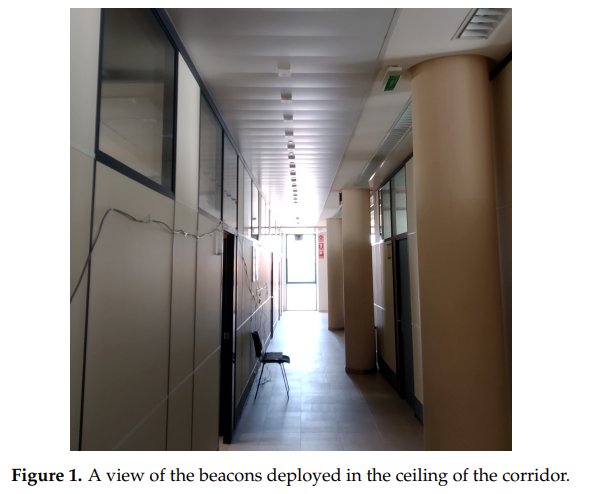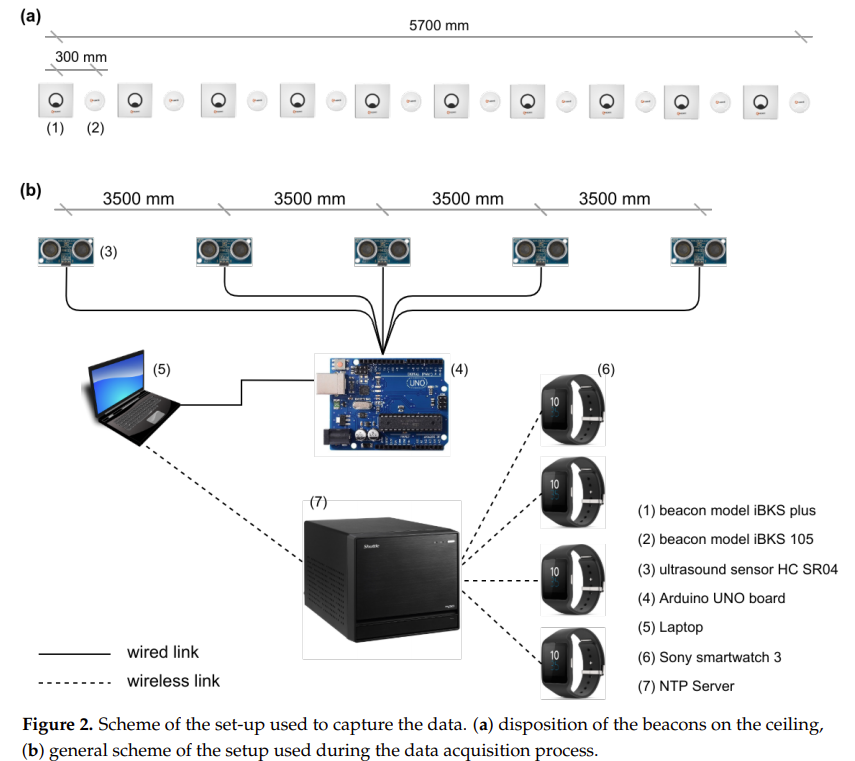There’s recent research into using Bluetooth beacons to measure human gait speed. The ability to walk can be used as a core indicator of health in aging and disease. For example, it can enable early detection of cognitive diseases such as dementia or Alzheimer’s disease.
Researchers at Universitat Jaume I and University of Extremadura, Spain, have created a new dataset. In their paper BLE-GSpeed: A New BLE-Based Dataset to Estimate User Gait Speed (pdf) they describe how they collected the data.


The database is freely available and includes:
- mac: The MAC address of the detected beacon.
- rssi: The RSSI value obtained for the beacon.
- device: A four-character descriptor for the smartwatch that performed the scan.
- timestamp: The time stamp at which the scan was received.
- user: The id of the user that was performing the experiment.
- direction: A number (0 or 1) indicating the direction of the walk.
- walk_id: A number that identifies each walk.
- speed: The actual speed of the user, in $m/s$.
It database contains RSSI measurements from different wearable devices and different BLE beacons, corresponding to 382 walks performed by 13 actors. The open source code used is available on GitHub.